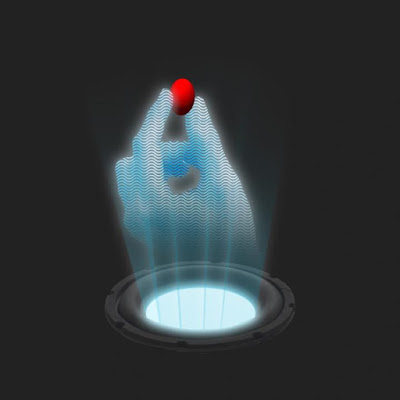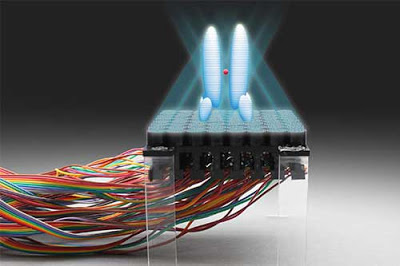| Online: | |
| Visits: | |
| Stories: |

| Story Views | |
| Now: | |
| Last Hour: | |
| Last 24 Hours: | |
| Total: | |
Reality Ripped from Science Fiction: Sonic Tractor Beam Invented, Acoustic Holograms that Levitate Particles – Video
The research team has created three-dimensional acoustic fields with shapes such as fingers, twisters and cages. These acoustic fields are the first acoustic holograms that can exert forces on particles to levitate and manipulate them.

Credit: Image courtesy of Asier Marzo, Bruce Drinkwater and Sriram Subramanian © 2015
Credit: Video courtesy of Asier Marzo, Bruce Drinkwater and Sriram Subramanian © 2015
The technique, published in Nature Communications, could be developed for a wide range of applications, for example a sonic production line could transport delicate objects and assemble them, all without physical contact. On the other hand, a miniature version could grip and transport drug capsules or microsurgical instruments through living tissue.
Asier Marzo, PhD student and the lead author, said: “It was an incredible experience the first time we saw the object held in place by the tractor beam. All my hard work has paid off, it’s brilliant.”
Bruce Drinkwater, Professor of Ultrasonics in the University of Bristol’s Department of Mechanical Engineering, added: “We all know that sound waves can have a physical effect. But here we have managed to control the sound to a degree never previously achieved.”
Sriram Subramanian, Professor of Informatics at the University of Sussex and co-founder of Ultrahaptics, explained: “In our device we manipulate objects in mid-air and seemingly defy gravity. Here we individually control dozens of loudspeakers to tell us an optimal solution to generate an acoustic hologram that can manipulate multiple objects in real-time without contact.”
The researchers used an array of 64 miniature loudspeakers to create high-pitch and high-intensity sound waves. The tractor beam works by surrounding the object with high-intensity sound and this creates a force field that keeps the objects in place. By carefully controlling the output of the loudspeakers the object can be either held in place, moved or rotated.
The team have shown that three different shapes of acoustic force fields work as tractor beams. The first is an acoustic force field that resembles a pair of fingers or tweezers. The second is an acoustic vortex, the objects becoming stuck-in and then trapped at the core and the third is best described as a high-intensity cage that surrounds the objects and holds them in place from all directions.
Previous work on acoustic studies had to surround the object with loudspeakers, which limits the extent of movement and restricts many applications. Last year, the University of Dundee presented the concept of a tractor beam but no objects were held in the ray.
Jacqui Bealing
University of Bristol
Citation: ‘Holographic acoustic elements for manipulation of levitated objects‘ by Asier Marzo, Sue Ann Seah, Bruce W. Drinkwater, Deepak Ranjan Sahoo, Benjamin Long and Sriram Subramanian, published in Nature Communications.
Source: http://www.ineffableisland.com/2015/10/reality-ripped-from-science-fiction.html




